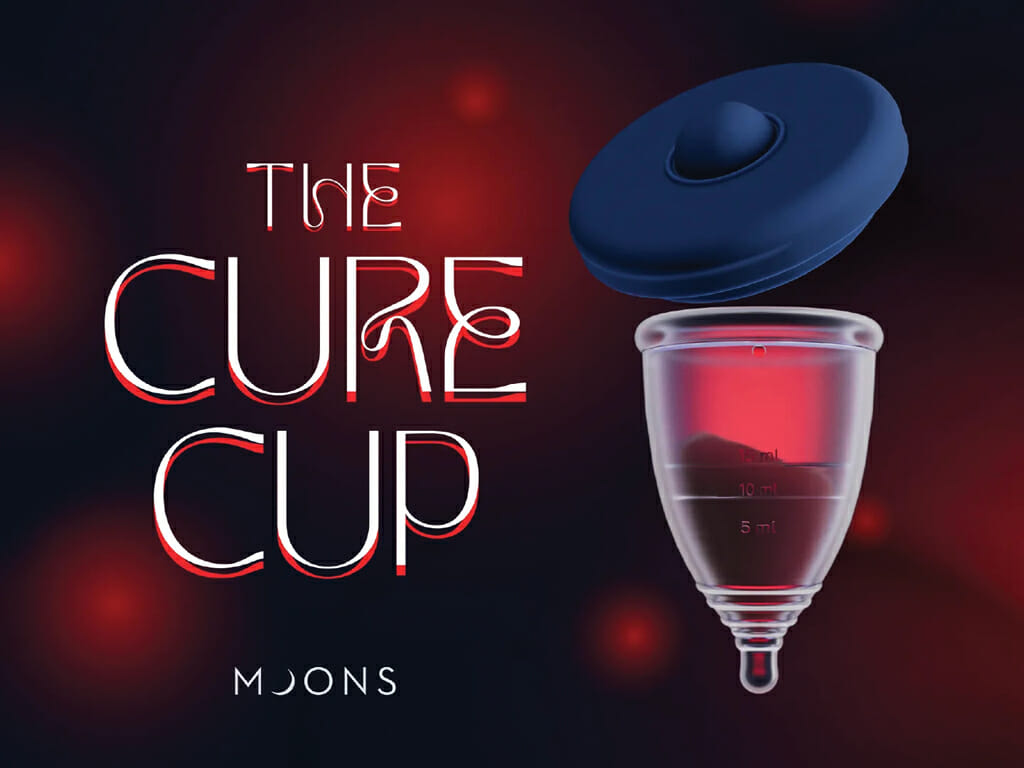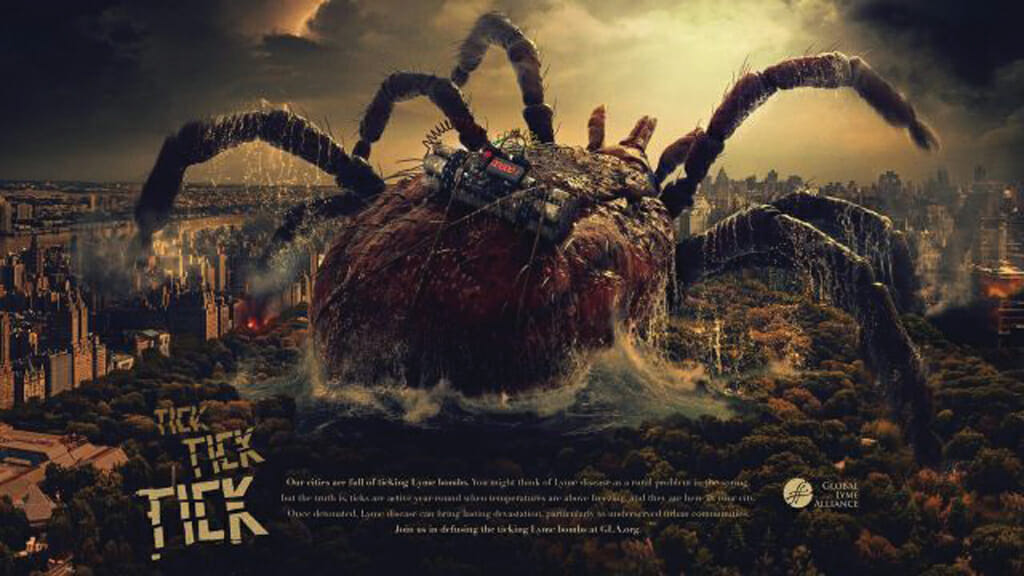Technoempathy And The Inclusivity Era
When Franklin Williams and his colleagues from District 23 developed Eyedar, the first app that allows blind people to see their surroundings, one of the more modest ideas involved the human ear. Or rather, human listening.
With Nick Homberg, a UX guru born blind, the team paced the app's voiceover at a normal pace. However, Homberg objected.
"Nick was like, 'It's too slow,'" recalls Williams, Area 23's executive vice president and director of experience design. "He told us, 'You have to understand that the whole world is in my ear. I'm processing information faster than you are. .

Here's how developers speed up sound in an echolocation app, created on behalf of Horizon Therapeutics, maker of the thyroid drug Tepezza, more than twice as fast as normal. "It was very quick for us. But it was an important way to discover the reality of blind experience."
For Williams, that's why healthcare professionals position themselves as an important player in the industry's ongoing inclusion efforts: They recognize the need for greater empathy. "It's sharing the feelings of another person, group or community. Many people want to start with a solution. But technology is only a secondary step after empathy."
Armed with what they believe to be a better understanding of the challenges faced by marginalized communities, companies like Horizon have turned to technology to promote equality and inclusion. Technical empathy, an approach that prioritizes the user experience, guides marketers to create solutions that meet the unique needs of poor populations. Through innovative apps, wearable devices, and personalized interventions, these companies pave the way for a more inclusive and responsive healthcare system.
It's worth noting that the biggest merger ideas often come from the smallest companies. Most of the time, they are created by patient people who have been classified for a long time. like women
"Women have different biological characteristics than men and historically have not been equally represented in clinical trials," said Naomi Fried, CEO and founder of Farmstars, a Boston-based accelerator that works with healthcare startups. digital. She added that the industry typically spends just 1 percent of its research and development budget on women's health issues.
When Fried launched a 10-week program dedicated to women's health, she did so with the conviction that she understood these differences. By his own admission, he was wrong.
For example, a startup called Vio Healthtech tests the effectiveness of medications using a wearable device that tracks menstrual cycle time. "It was only through this series that I learned that women respond differently to medications due to fluctuations in menstrual hormones, and that 70 percent of all medications depend on this cyclical timing," Fried explained. "It is affected by drugs for diabetes, cardiovascular problems, cancer and depression."

Another PharmStars competitor, MiMark, aims to replace painful gynecological diagnostic methods with non-invasive liquid biopsy. Then there's Samphire Neuroscience, which tracks period pain and mood swings with a band. "No one can say that it is a medical device," Farid said.
Some new technology proposals focus on specific health disparities. My Moves Matter is designed to help women with Parkinson's disease and includes features that address specific needs (such as oral information instead of written). Everyone prefers the efficiency of impressive technology, and everyone treats potential users first and foremost with empathy.
"It's about the importance of bringing people together on the platforms they're already using," says Farid.
Trust, privacy and data protection issues are critical to the entire healthcare system. But they are increasingly visible among marginalized groups, who have every reason to view service providers, insurers, and pharmaceutical companies as fierce (and even dangerous) adversaries. Patients are well aware that advances in artificial intelligence and machine learning can be used against them.
"People are concerned that pharmaceutical companies could re-identify patients by focusing on interactions based on a single diagnosis," explains Dan Fisher, MD and IPM.ai Practice Leader for IPM.ai Real Chemistry.
Despite these challenges, artificial intelligence has enormous potential to make healthcare decisions more diverse, comprehensive, and accurate. Fisher says that while many projects start with a singular approach to health care, understanding comes gradually.
"So we're asking how we can address biases that are inherent in the care patients receive and the setting in which they receive care, and how we can use health data to address that," he says.
For Fisher, this gets to the heart of empathy for technology: "How can we use artificial intelligence to better understand the human experience? How can we find patients from the bottom up?"
Apparently it works. It encompasses the ability to link social determinants of health, such as race, age, income, and neighborhood, with health data.
"Historically, the fit has been very weak, but now we can go beyond that data," says Fisher. "In some recent studies on liver cancer, we were even surprised to know 90% of the patients."
The data also shows which providers are most effective in reaching and serving specific populations and who needs the most support.
"If some providers have a higher proportion of these patients, we can ask, 'What can we learn from them?' "And if there aren't many, pharmaceutical companies can decide how to build awareness and education tools," Fisher continues, noting that IPM.ai currently has about 300 million unique and unidentified patients in its messy data. With a bottom-up approach, we hope to find patients who meet the clinical criteria, and now we can look at the individual patient level and see who meets the specific needs of a particular study."
This could help to solve a current problem, especially in the field of rare diseases: often, by the time patients are aware of their condition, they have passed the critical point of intervention. "Machine learning helps us predict which patients may have rare and unrecognized diseases, which can be one of the most fruitful uses of technology for our clients. It will help healthcare professionals find the right point of intervention." says Fisher.
For Astellas Gene Therapies, IPM.ai created a machine learning model to support drugs for tubulopathy, a rare neuromuscular disease for which there is no approved treatment. As a result, the institutions managed to find 10% of the patients.
Needless to say, it's not just about technology. Leading health and marketing experts have long recognized that talking to marginalized groups —and not talking to you —remains critical. Over time, they also realize that tone of voice is more important than most doctors say.
Everything they do requires deep listening. And when brands do well, the rewards are very rewarding.
In collaboration with Real Chemistry's 21Grams, Moons, a menstrual cup company, recently developed The Cure Cup. Although menstrual flow has long been considered unhealthy by society, Moons hopes to draw attention to the fact that it contains valuable stem cells that can contribute to the development of many types of research.
The company offers users glasses with a special coating. After collecting the menstrual flow, they plug it up and send it to the moon, hoping that their contribution will lead to a breakthrough in medicine.
21Grams Vice President and Creative Director Katie Dean and Clay McGuire relished the freedom to create such a radical campaign in a category long dominated by faux blue suits and clean white suits. They also enjoyed seeing the women respond to knowing that menstrual flow works.
"We were surprised by the amount of internal change the participants experienced," Dean says in response to emailed questions. “We heard from person after person how difficult it was to live with the shame of that time and how free they felt when they finally got rid of it. Technology can facilitate people's emotional experience by seeing, acknowledging, and expanding their human experience.

Using the right tone of voice contributed to the success of the Lyme Bomb Detector created by Eversana Intouch for the Global Lyme Alliance. Advocacy and technical groups created to help people with darker skin to identify if they have Lyme disease are needed to find a way to introduce the disease to new audiences, not to mention the ticks that carry it.
Hardy New England species kept these arthropods at bay for years, but now the ticks have made their way into city parks, and many city dwellers don't know how to spot them. The campaign also expanded into diagnosis: It had to warn black viewers about the bad news: If an infected tick bites them, diagnosis can take much longer as providers struggle to diagnose rashes on inflamed skin.
According to Susan Pearlbacks, creative director of Eversana Intouch, organizations quickly realized the limitations of medical discovery methods and the shortcomings of existing technologies.
We have worked on many AI projects, integrating strategy, content, and content optimization into the development process. “We thought we could speed up diagnosis with artificial intelligence,” he recalls by email. We were convinced that we could develop an app that would use the latest advances in artificial intelligence, especially in the field of dermatology, to more effectively detect Lyme disease. And it bore fruit."
While markup allows users to diagnose potential infections and link them to service providers, presenting it in a way that resonates with the target audience is challenging. "We needed to balance information about ticks, their habitats, and prevention strategies, while paying attention to the nuances of black rash appearance," says Pearlbacks. "We were able to provide users with extensive knowledge about Lyme disease, regardless of skin color, and provide an early detection method for those most at risk."
Perlbachs adds that the experience led to a key learning: All marketers could be more inclusive. "It can speed up diagnosis, like we did here. It means making some tasks or problems easier." “But brands are much more powerful than words. We need to show that we are helping doctors and patient communities, not just tell them.
Williams agrees, adding that if medical technology can't bring real benefits to many members of society, then it's not worth it. He boasts that Eyedar is as useful for blind skiers as it is for blind people who are too shy to leave the house.
"We can't do an experiment because we don't want to tell people who it is," he says. "We want them to tell us who they are and then use technology to improve their situation."
What are the takeaways for others hoping to follow a similar path? It starts with the empathy and deep listening it requires.
"Many people start with a resolution and go after it," Williams continues. "Then they reinvent the problem to serve the technology they've already identified."
Brands that get it wrong are at great risk. "Patient advocacy groups can determine if the technology is for their community or for a company that wants to make money, and the moment they feel like it, they'll shut it down," Williams added. "If they make a sincere effort to make the experience more correct, they will move heaven and earth to get what society has."
As of August 1, 2023, MM+M - Medical Marketing and Media

